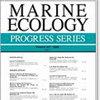季节性影响气候变暖对海带光合作用的影响
IF 2.2
3区 环境科学与生态学
Q2 ECOLOGY
引用次数: 0
摘要
摘要:全年气候变暖对海带物种光合作用性能的影响尚不清楚。在全球变暖时期,由于光合作用与温度的高度相关性,基本光合作用数据非常重要。在赫尔戈兰岛(德国北海),沿着深度梯度(春季平均低潮水位以下 2、4 和 6 米)对海带 Laminaria hyperborea 的季节性光合作用性能进行了量化采样。在原地辐照度和温度条件下(春季:7°C;夏季:16°C;秋季:14°C;冬季:6°C)以及在气候变暖条件下(+4°C),对叶片进行了为期 3 天的培养。结果表明,季节性和采集深度对氧气形成(光合作用与辐照度的关系曲线)和色素沉积的影响比短期气候变暖更大,因为辐照度水平的变化比温度的变化有更强的相关性。光合作用在春季和夏季最高,受气候变暖的影响较小,这表明藻类对短期温度升高有很强的适应能力。在夏季,藻类在亚致死温度(20°C)下的最大量子产率(Fv/Fm)有所降低,这表明藻类具有中等程度的应激反应。短期升温加剧了沿深度梯度的光合适应,表现为 Pmax 和叶绿素含量的大幅下降。总之,短期升温对深度适应的影响随季节而变化,强调了考虑季节的重要性。总之,L. hyperborea 在不同深度表现出不同的季节光合响应模式和较高的光适应潜力。因此,在预测气候变暖对海带初级生产的影响时,需要考虑季节和深度效应。本文章由计算机程序翻译,如有差异,请以英文原文为准。
Seasonality influences the effect of warming on kelp photosynthesis
ABSTRACT: The consequences of a year-round warming scenario on the photosynthetic performance of kelp species are unknown. In times of global warming, fundamental photosynthesis data are important due to the high temperature dependence. Seasonal photosynthetic performance was quantified in the kelp Laminaria hyperborea sampled along a depth gradient (2, 4 and 6 m below mean low water spring tide) at the island of Helgoland (North Sea, Germany). Blade discs were cultivated at in situ irradiances and temperatures (spring: 7°C; summer: 16°C; autumn: 14°C; winter: 6°C) and in parallel under warming scenarios (+4°C) for 3 d. The results highlighted that seasonality and collection depth had a stronger effect on oxygen formation (photosynthesis versus irradiance curve) and pigmentation than short-term warming, as there is a stronger correlation with changing irradiance levels than with temperature. Photosynthesis was highest in spring and summer, with small impacts of warming, indicating a high resilience to short-term temperature increases. In summer, algae exhibited reduced maximum quantum yields (Fv/Fm) at sub-lethal temperatures (20°C), pointing to a moderate stress response. Photosynthetic acclimation along the depth gradient was intensified by short-term warming, reflected in a stronger decrease in Pmax and chlorophyll content. Overall, the influence of short-term warming on the depth acclimation varied seasonally, underlining the importance of considering the season. In conclusion, L. hyperborea revealed distinct seasonal photosynthetic response patterns and a high photoacclimation potential at different depths. Therefore, seasonal and depth effects need to be considered when predicting the effects of warming on kelp primary production.
求助全文
通过发布文献求助,成功后即可免费获取论文全文。
去求助
来源期刊

Marine Ecology Progress Series
环境科学-海洋学
CiteScore
5.30
自引率
8.00%
发文量
238
审稿时长
3 months
期刊介绍:
The leading journal in its field, MEPS covers all aspects of marine ecology, fundamental and applied. Topics covered include microbiology, botany, zoology, ecosystem research, biological oceanography, ecological aspects of fisheries and aquaculture, pollution, environmental protection, conservation, and resource management.
 求助内容:
求助内容: 应助结果提醒方式:
应助结果提醒方式:


